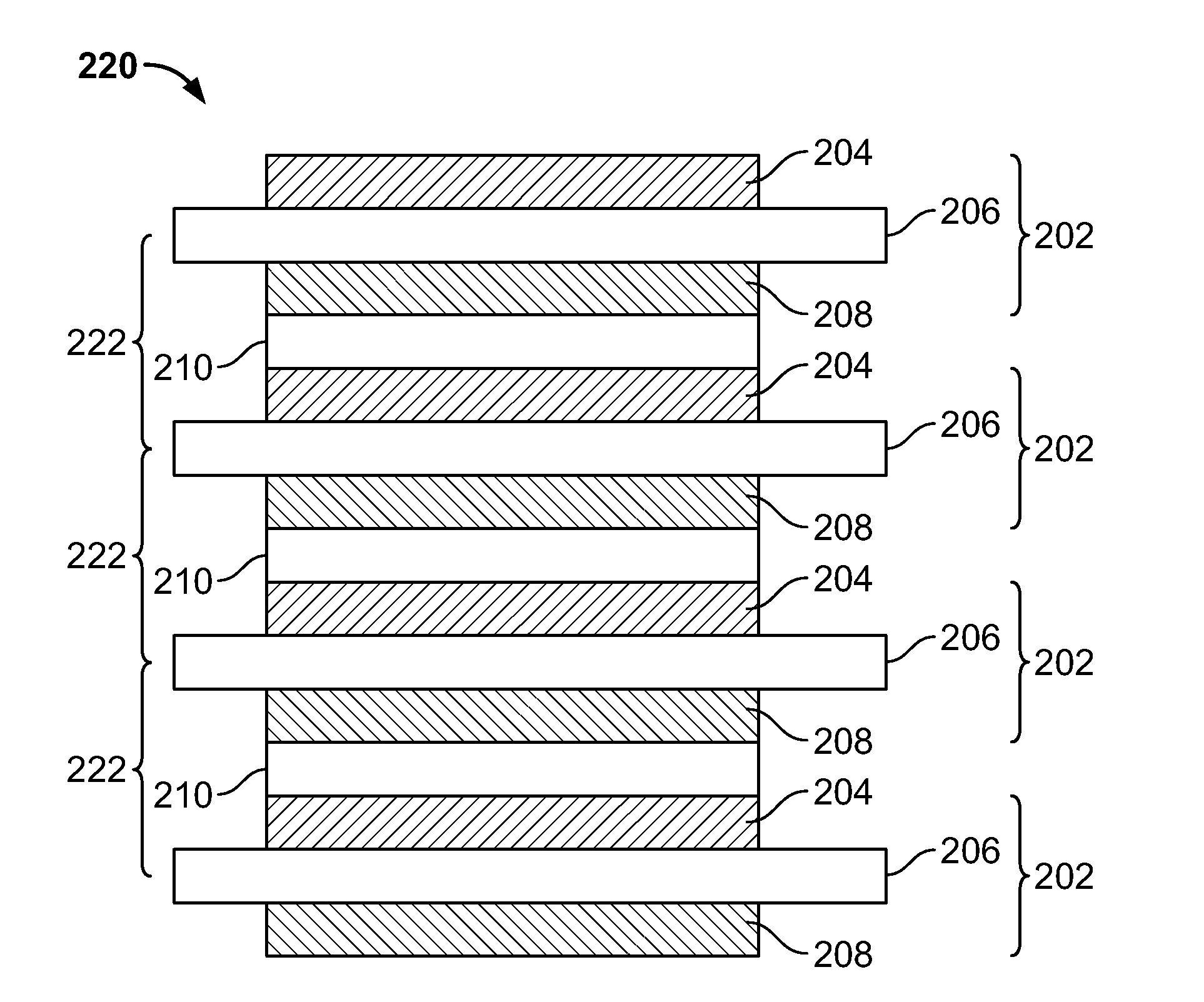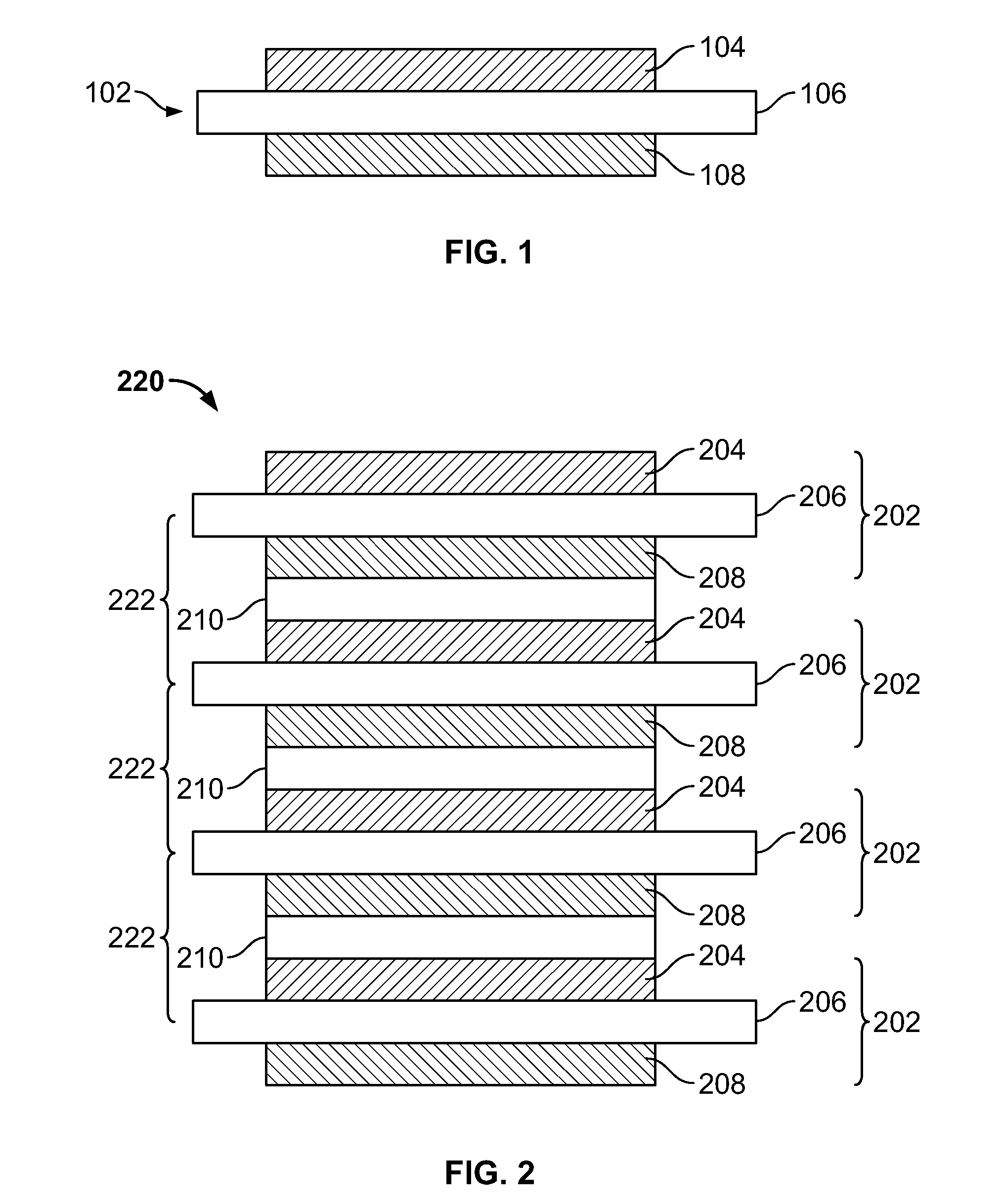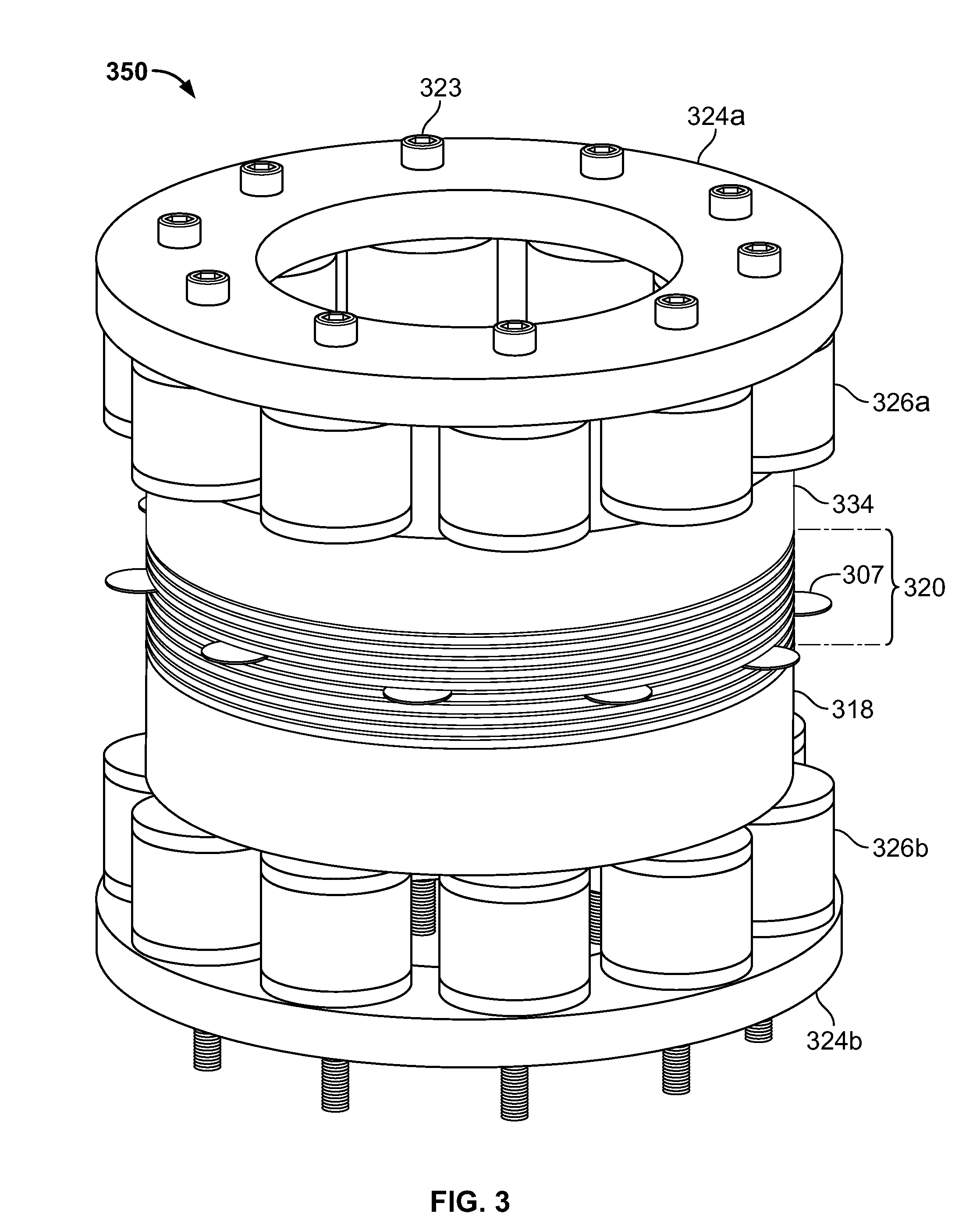Variable volume containment for energy storage devices
a technology of energy storage devices and volume containment, which is applied in the direction of sustainable manufacturing/processing, flat cell grouping, batteries, etc., can solve the problems of device damage, device may not work properly, and the net volumetric shift of the container
- Summary
- Abstract
- Description
- Claims
- Application Information
AI Technical Summary
Benefits of technology
Problems solved by technology
Method used
Image
Examples
Embodiment Construction
[0026]Apparatus and methods are provided for energy storage devices (ESDs) having variable volume containment, and are described below with reference to FIGS. 1-15. The present invention relates to ESDs such as, for example, batteries, capacitors, or any other suitable electrochemical energy or power storage devices which may store and / or provide electrical energy or current. It will be understood that while the present invention is described herein in the context of a stacked bi-polar ESD having variable volume containment, the concepts discussed are applicable to any intercellular electrode configuration including, but not limited to, parallel plate, prismatic, folded, wound and / or bi-polar configurations, any other suitable configuration, or any combinations thereof.
[0027]As defined herein, “inter-electrode spacing” is the distance between active material electrode layers in a stacked bi-polar ESD. This may be applied, for example, to the distance between a positive and negative ...
PUM
| Property | Measurement | Unit |
|---|---|---|
| gap distances | aaaaa | aaaaa |
| gap distances | aaaaa | aaaaa |
| gap distances | aaaaa | aaaaa |
Abstract
Description
Claims
Application Information
 Login to View More
Login to View More - R&D
- Intellectual Property
- Life Sciences
- Materials
- Tech Scout
- Unparalleled Data Quality
- Higher Quality Content
- 60% Fewer Hallucinations
Browse by: Latest US Patents, China's latest patents, Technical Efficacy Thesaurus, Application Domain, Technology Topic, Popular Technical Reports.
© 2025 PatSnap. All rights reserved.Legal|Privacy policy|Modern Slavery Act Transparency Statement|Sitemap|About US| Contact US: help@patsnap.com



